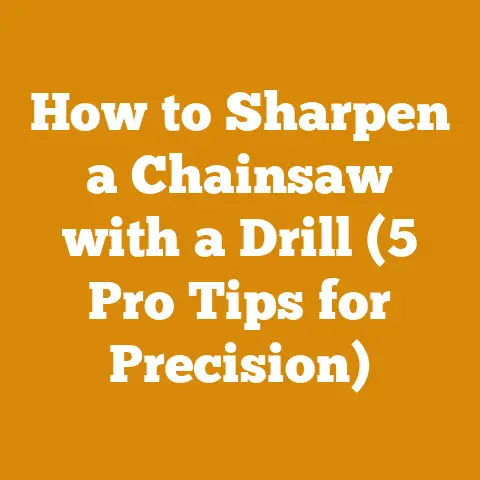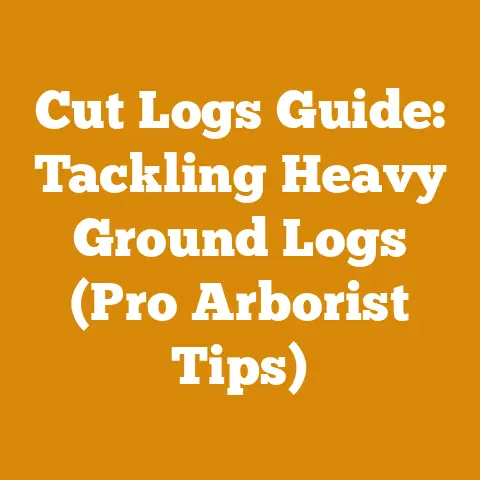Pine Wood Paneling Finish Tips (5 Pro Techniques)
The whisper of the wind through the pines, the scent of freshly cut wood, the promise of warmth radiating from a crackling fire… These are the siren songs that draw us to wood. And trust me, I’ve learned the hard way that a little foresight can save you a whole lot of heartache, and more importantly, a whole lot of money.
Decoding the Cost of Pine Wood Paneling Finish: 5 Pro Techniques and Their Price Points
Pine wood paneling can transform a room, adding warmth, character, and a touch of rustic elegance. But before you get swept away by the vision, let’s break down the costs associated with achieving that perfect finish. We’ll examine five popular finishing techniques, analyze their individual cost components, and provide practical advice on how to optimize your budget.
1. The Classic Clear Coat: Showcasing Pine’s Natural Beauty
The Appeal: A clear coat finish is all about highlighting the natural beauty of the pine. It protects the wood while allowing its grain, knots, and color variations to shine through. This technique is ideal for those who appreciate the raw, unadulterated look of wood.
Cost Breakdown:
-
Materials: This is where you’ll likely see the most variation.
- Sandpaper: Essential for surface preparation. Expect to spend around $10-$20 for a variety of grits (80, 120, 220). I always buy a little extra, because you never know when you might need it.
- Wood Conditioner (optional): Pine can be prone to blotching, especially with stain. A wood conditioner helps to even out the absorption. Budget $15-$25 per quart. I can’t stress enough how important this is, especially if you’re new to finishing pine. I learned this the hard way, ending up with a blotchy mess that required hours of sanding to fix!
- Clear Coat: Options include polyurethane, lacquer, and varnish. Polyurethane is durable and readily available, making it a popular choice. Expect to pay $30-$50 per gallon for a good quality polyurethane. Lacquer offers a quick-drying, smooth finish but requires specialized equipment and ventilation. Varnish is another durable option, offering excellent resistance to water and chemicals.
- Application Tools: Brushes, rollers, or spray equipment. High-quality brushes can cost $15-$30 each, while rollers are cheaper but may not provide as smooth a finish. Spray equipment ranges from inexpensive aerosol cans to professional-grade sprayers costing hundreds of dollars.
- Rags and Cleaning Supplies: For wiping down surfaces and cleaning up spills. Allocate $5-$10.
-
Labor: If you’re DIYing, your labor is “free” (aside from your time, of course!). However, if you’re hiring a professional, labor costs can range from $2 to $5 per square foot, depending on the complexity of the project and the experience of the finisher. Remember to factor in setup and cleanup time.
- Tools:
- Sander: If you don’t already own one, a random orbital sander can be rented for around $20-$30 per day.
- Safety Gear: Dust mask, gloves, and eye protection are essential. Budget $10-$15.
-
Example Scenario: Finishing 200 square feet of pine paneling with a clear coat of polyurethane.
- Sandpaper: $15
- Wood Conditioner: $20
- Polyurethane (1 gallon): $40
- Brushes/Rollers: $20
- Rags and Cleaning Supplies: $5
- Sander Rental (1 day): $25
- Safety Gear: $10
- Total DIY Cost: $135 or $0.68 per sq ft
- Professional Labor (at $3/sq ft): $600
- Total Professional Cost: $735 or $3.68 per sq ft
Cost Optimization Tips:
- Shop around for materials: Prices can vary significantly between different suppliers.
- Consider buying in bulk: If you have a large project, buying materials in larger quantities can save you money.
- Invest in quality tools: While it may be tempting to save money on cheap tools, they often don’t last as long and can compromise the quality of your finish.
- DIY if you’re comfortable: Finishing pine paneling is a relatively straightforward project that most DIYers can handle. However, if you’re unsure of your abilities, it’s best to hire a professional. I’ve seen too many DIY projects gone wrong, resulting in costly repairs and wasted materials.
- Proper surface preparation: Careful sanding and cleaning are crucial for a smooth, even finish. This will save you time and money in the long run by reducing the need for multiple coats of finish.
2. The Warm Embrace of Stain: Adding Depth and Character
The Appeal: Staining pine paneling allows you to customize the color and enhance the wood grain. From light and airy whitewashes to rich, dark mahoganies, the possibilities are endless.
Cost Breakdown:
- Materials:
- Sandpaper: Same as clear coat, $10-$20.
- Wood Conditioner: Even more crucial with stain! $15-$25 per quart.
- Stain: Oil-based or water-based. Oil-based stains offer richer color and better penetration, but they require more ventilation and cleanup. Water-based stains are easier to clean up and have lower VOCs. Expect to pay $20-$40 per quart.
- Clear Coat: To protect the stain and add durability. $30-$50 per gallon.
- Application Tools: Brushes, rags, or foam applicators. Rags are often preferred for applying stain, as they allow for better control.
- Rags and Cleaning Supplies: For wiping excess stain and cleaning up spills. Allocate $5-$10.
- Labor: Similar to clear coat, $2-$5 per square foot for professional finishing.
- Tools: Same as clear coat.
-
Example Scenario: Staining 200 square feet of pine paneling with an oil-based stain and a polyurethane topcoat.
- Sandpaper: $15
- Wood Conditioner: $20
- Oil-Based Stain (1 quart): $30
- Polyurethane (1 gallon): $40
- Brushes/Rags: $15
- Rags and Cleaning Supplies: $5
- Sander Rental (1 day): $25
- Safety Gear: $10
- Total DIY Cost: $160 or $0.80 per sq ft
- Professional Labor (at $4/sq ft): $800
- Total Professional Cost: $960 or $4.80 per sq ft
Cost Optimization Tips:
- Test stain on scrap wood: Before applying stain to your paneling, test it on a scrap piece of pine to ensure you like the color. This can save you from costly mistakes. I once stained an entire wall a color I thought I loved, only to realize it was way too dark for the room. A costly and time-consuming lesson!
- Apply stain in thin coats: Multiple thin coats of stain will provide a more even and consistent color than one thick coat.
- Wipe off excess stain: After applying stain, wipe off any excess with a clean rag. This will prevent the stain from becoming sticky or uneven.
- Consider a gel stain: Gel stains are thicker than liquid stains and are less likely to drip or run, making them a good option for vertical surfaces.
- Explore water-based stains: Often less expensive than oil-based and easier to clean.
3. The Rustic Charm of Whitewash: Creating a Light and Airy Atmosphere
The Appeal: Whitewashing pine paneling creates a soft, rustic look that’s perfect for creating a light and airy atmosphere. It allows the wood grain to show through while adding a touch of vintage charm.
Cost Breakdown:
- Materials:
- Sandpaper: $10-$20.
- Paint Thinner or Water (depending on the paint you use): $5-$10.
- White Paint: Latex or chalk paint. Latex paint is more durable, while chalk paint provides a matte finish and is easier to distress. Expect to pay $20-$40 per quart.
- Clear Coat (optional): For added protection. $30-$50 per gallon.
- Application Tools: Brushes or rags. Rags are often preferred for whitewashing, as they allow for better control and a more textured finish.
- Rags and Cleaning Supplies: $5-$10.
- Labor: $2-$4 per square foot for professional whitewashing.
- Tools: Same as clear coat.
-
Example Scenario: Whitewashing 200 square feet of pine paneling with latex paint and no topcoat.
- Sandpaper: $15
- Paint Thinner: $5
- Latex Paint (1 quart): $25
- Brushes/Rags: $10
- Rags and Cleaning Supplies: $5
- Sander Rental (1 day): $25
- Safety Gear: $10
- Total DIY Cost: $95 or $0.48 per sq ft
- Professional Labor (at $3/sq ft): $600
- Total Professional Cost: $695 or $3.48 per sq ft
Cost Optimization Tips:
- Dilute the paint: Whitewashing involves diluting the paint with water or paint thinner. This allows the wood grain to show through and creates a more transparent finish. Start with a ratio of 1:1 (paint to thinner/water) and adjust to your liking.
- Apply in thin coats: Just like with stain, multiple thin coats of whitewash will provide a more even and consistent finish.
- Wipe off excess paint: After applying whitewash, wipe off any excess with a clean rag. This will prevent the finish from becoming too opaque.
- Distress the finish (optional): For a more rustic look, you can distress the whitewashed paneling by sanding edges or using sandpaper to remove some of the paint.
- Skip the topcoat: If you’re using latex paint, a topcoat may not be necessary, as latex paint is already quite durable. This can save you money on materials.
4. The Bold Statement of Paint: A Splash of Color and Personality
The Appeal: Painting pine paneling allows you to completely transform the look of a room with a splash of color and personality. From vibrant hues to subtle neutrals, the possibilities are endless.
Cost Breakdown:
- Materials:
- Sandpaper: $10-$20.
- Primer: Essential for sealing the wood and providing a good base for the paint. Expect to pay $20-$40 per gallon.
- Paint: Latex or oil-based. Latex paint is more common due to its ease of use and cleanup. Expect to pay $30-$60 per gallon for a good quality paint.
- Application Tools: Brushes, rollers, or spray equipment.
- Rags and Cleaning Supplies: $5-$10.
- Labor: $3-$6 per square foot for professional painting.
- Tools: Same as clear coat.
-
Example Scenario: Painting 200 square feet of pine paneling with latex paint and a primer.
- Sandpaper: $15
- Primer (1 gallon): $30
- Latex Paint (1 gallon): $45
- Brushes/Rollers: $20
- Rags and Cleaning Supplies: $5
- Sander Rental (1 day): $25
- Safety Gear: $10
- Total DIY Cost: $150 or $0.75 per sq ft
- Professional Labor (at $5/sq ft): $1000
- Total Professional Cost: $1150 or $5.75 per sq ft
Cost Optimization Tips:
- Use a good quality primer: A good quality primer is essential for sealing the wood and providing a good base for the paint. This will help the paint adhere better and prevent it from peeling or chipping.
- Apply multiple thin coats: Multiple thin coats of paint will provide a more even and consistent finish than one thick coat.
- Sand between coats: Sanding lightly between coats of paint will help to smooth out any imperfections and create a more professional finish.
- Choose the right paint sheen: Different paint sheens have different levels of glossiness. Flat or matte sheens are good for hiding imperfections, while glossier sheens are more durable and easier to clean.
- Consider using a paint sprayer: A paint sprayer can provide a smooth, even finish, especially on large surfaces. However, paint sprayers can be expensive, so it’s best to rent one if you don’t already own one.
5. The Durable Shield of Epoxy Resin: A Modern and Protective Finish
The Appeal: Epoxy resin provides a durable, glossy, and waterproof finish that’s perfect for high-traffic areas or areas exposed to moisture. It can also be used to create unique and artistic effects.
Cost Breakdown:
- Materials:
- Sandpaper: $10-$20.
- Epoxy Resin: This is the most expensive component. Expect to pay $50-$100 per gallon, depending on the brand and quality.
- Hardener: Typically included with the epoxy resin.
- Mixing Cups and Stir Sticks: For mixing the epoxy resin and hardener. $5-$10.
- Application Tools: Brushes, rollers, or squeegees.
- Heat Gun or Torch (optional): For removing air bubbles.
- Rags and Cleaning Supplies: $5-$10.
- Labor: $5-$10 per square foot for professional epoxy resin application. This is a specialized skill.
- Tools: Same as clear coat, plus the potential heat gun.
-
Example Scenario: Applying epoxy resin to 200 square feet of pine paneling.
- Sandpaper: $15
- Epoxy Resin (2 gallons): $150
- Mixing Cups and Stir Sticks: $5
- Brushes/Rollers: $20
- Heat Gun Rental (1 day): $30
- Rags and Cleaning Supplies: $5
- Safety Gear: $10
- Total DIY Cost: $235 or $1.18 per sq ft
- Professional Labor (at $7/sq ft): $1400
- Total Professional Cost: $1635 or $8.18 per sq ft
Cost Optimization Tips:
- Measure accurately: Epoxy resin needs to be mixed in precise ratios. Measure the resin and hardener carefully to ensure proper curing.
- Mix thoroughly: Mix the resin and hardener thoroughly to ensure a consistent finish.
- Remove air bubbles: Air bubbles can ruin the appearance of the epoxy resin finish. Use a heat gun or torch to remove them.
- Work in a well-ventilated area: Epoxy resin can release harmful fumes, so it’s important to work in a well-ventilated area.
- Apply in thin layers: Multiple thin layers of epoxy resin will provide a more even and durable finish than one thick layer.
- Consider a self-leveling epoxy: Self-leveling epoxies are designed to flow and level out on their own, making them easier to apply.
Diving Deeper: The Nuances of Pine Wood Pricing and Supply
Beyond the finishing techniques, understanding the cost of the pine wood itself is crucial. The price of pine fluctuates based on several factors, and being aware of these can help you make informed purchasing decisions.
Factors Influencing Pine Wood Costs:
- Species: Different pine species have different properties and prices. For example, Eastern White Pine is generally more expensive than Southern Yellow Pine due to its superior workability and stability.
- Grade: The grade of the pine wood refers to its quality and appearance. Higher grades have fewer knots and imperfections and are therefore more expensive. Common grades include Select, Premium, and Knotty Pine.
- Dimensions: The size and thickness of the pine paneling will also affect the price. Thicker panels generally cost more per square foot.
- Location: The location of the supplier can also influence the price of pine wood. Suppliers in areas with abundant pine forests may offer lower prices.
- Market Conditions: Supply and demand, economic conditions, and seasonal factors can all affect the price of pine wood.
Global and Regional Timber Prices:
- North America: According to the U.S. Forest Service, the average stumpage price (the price paid for standing timber) for pine in the Southern United States was around $20-$30 per ton in 2023. However, this price can vary significantly depending on the species, grade, and location.
- Europe: In Europe, the price of pine timber varies depending on the country and the specific species. For example, in Scandinavia, Scots Pine is a common species, and its price is influenced by factors such as forest certification and sustainable forestry practices.
- Asia: In Asia, the price of pine timber is influenced by factors such as deforestation, illegal logging, and government regulations.
Sourcing Strategies:
- Local Lumberyards: Local lumberyards are a good place to start your search for pine paneling. They often offer a variety of species, grades, and dimensions.
- Big Box Stores: Big box stores like Home Depot and Lowe’s also sell pine paneling. However, their selection may be more limited, and their prices may be higher than local lumberyards.
- Online Retailers: Online retailers offer a convenient way to shop for pine paneling. However, it’s important to factor in shipping costs and to carefully inspect the wood upon arrival.
- Direct from Mills: If you need a large quantity of pine paneling, consider buying directly from a sawmill. This can often save you money, but it requires more research and planning.
The Tool Chest: Essential Equipment and Their Associated Costs
Having the right tools is essential for a successful pine wood paneling project. Let’s examine the costs associated with acquiring and maintaining the necessary equipment.
Essential Tools:
- Measuring Tape: For accurate measurements. $10-$20.
- Pencil: For marking cuts. $1-$2.
- Saw: For cutting the paneling to size. Options include a hand saw, circular saw, or miter saw. A miter saw is ideal for making precise angle cuts. Hand saws are the least expensive. Circular saws range from $50 to $200, and miter saws range from $100 to $500.
- Nail Gun or Hammer: For attaching the paneling to the wall. A nail gun is faster and easier to use, but it requires an air compressor. Nail guns range from $50 to $300, and air compressors range from $100 to $500.
- Level: For ensuring the paneling is installed straight. $10-$30.
- Stud Finder: For locating studs in the wall. $10-$30.
- Safety Glasses: For protecting your eyes. $10-$15.
- Dust Mask: For protecting your lungs. $5-$10.
- Sander: For smoothing the surface of the paneling. A random orbital sander is a good choice. $50-$150.
- Brushes, Rollers, or Spray Equipment: For applying the finish.
Rental vs. Purchase: A Cost-Benefit Analysis:
- Rental: Renting tools can be a good option if you only need them for a short period of time. Rental costs typically range from $10 to $50 per day, depending on the tool.
- Purchase: Purchasing tools is a better option if you plan to use them frequently. However, it’s important to factor in the cost of storage and maintenance.
Maintenance Costs:
- Cleaning: Clean your tools after each use to prevent rust and corrosion.
- Sharpening: Sharpen saw blades regularly to ensure clean cuts.
- Lubrication: Lubricate moving parts to prevent wear and tear.
- Repairs: Factor in the cost of occasional repairs.
Cost Comparison Table for Logging Tools:
| Tool | Rental Cost (per day) | Purchase Cost (New) | Purchase Cost (Used) | Maintenance Cost (Annual) |
|---|---|---|---|---|
| Chainsaw | $40 – $70 | $200 – $800 | $100 – $400 | $50 – $100 |
| Log Splitter | $50 – $100 | $500 – $2000 | $300 – $1000 | $25 – $50 |
| Miter Saw | $25 – $50 | $100 – $500 | $50 – $250 | $10 – $20 |
| Nail Gun | $15 – $30 | $50 – $300 | $30 – $150 | $5 – $10 |
| Air Compressor | $20 – $40 | $100 – $500 | $50 – $250 | $10 – $20 |
| Random Orbit Sander | $15 – $30 | $50 – $150 | $30 – $75 | $5 – $10 |
Disclaimer: Prices are estimates and can vary depending on location, brand, and condition.
The Human Element: Labor Costs and Considerations
While DIY projects can save money, sometimes hiring a professional is the best option. Understanding labor costs and related considerations is essential for budgeting your pine wood paneling project.
DIY vs. Professional Installation:
- DIY: DIY installation can save you money on labor costs, but it requires time, effort, and skill. If you’re not comfortable with woodworking, it’s best to hire a professional. I’ve personally tackled many DIY projects, from building decks to installing flooring. While the sense of accomplishment is rewarding, I’ve also learned that some projects are best left to the pros.
- Professional Installation: Professional installation ensures a high-quality finish and can save you time and hassle. However, it’s important to factor in the cost of labor.
Factors Influencing Labor Costs:
- Experience: More experienced contractors typically charge higher rates.
- Location: Labor costs vary depending on the location.
- Complexity: More complex projects will require more labor and will therefore cost more.
- Timeframe: If you need the project completed quickly, you may have to pay a premium for expedited service.
Estimating Labor Costs:
- Hourly Rate: Contractors typically charge an hourly rate. This rate can vary depending on the factors listed above.
- Per Square Foot: Some contractors may charge a per-square-foot rate for installing pine paneling.
- Fixed Price: A fixed price is a set price for the entire project. This can be a good option if you want to know the exact cost upfront.
The Hidden Costs of DIY:
Don’t forget to factor in the hidden costs of DIY projects. These can include:
- Time: Your time is valuable. Don’t underestimate the amount of time it will take to complete the project.
- Mistakes: Mistakes can be costly. If you make a mistake, you may have to buy more materials or hire a professional to fix it.
- Tools: You may need to purchase or rent tools that you don’t already own.
- Frustration: DIY projects can be frustrating. If you’re not enjoying the project, it may be best to hire a professional.
Case Study: Comparing DIY and Professional Installation:
Let’s say you want to install pine paneling in a 100-square-foot room.
- DIY:
- Materials: $200
- Tools (rental): $50
- Time: 20 hours
- Total Cost: $250 + 20 hours of your time
- Professional Installation:
- Materials: $200
- Labor (at $4/sq ft): $400
- Total Cost: $600
In this example, DIY installation would save you $350, but it would require 20 hours of your time. If your time is worth more than $17.50 per hour, it may be more cost-effective to hire a professional.
Depending on your location and the scope of your project, you may need to obtain permits or comply with certain regulations. These can add to the overall cost of your pine wood paneling project.
Building Permits:
- When are they required? Building permits are typically required for projects that involve structural changes to a building, such as adding or removing walls.
- Cost: The cost of a building permit can vary depending on the location and the scope of the project. Expect to pay anywhere from $50 to $500 or more.
- How to obtain: Contact your local building department to obtain a building permit.
Environmental Regulations:
- VOCs: Volatile organic compounds (VOCs) are chemicals that are released into the air from certain finishing products. Some VOCs are harmful to human health and the environment.
- Disposal of Waste: Dispose of waste materials properly. Some materials, such as paint and stain, may need to be disposed of at a hazardous waste facility.
- Sustainable Forestry Practices: Consider purchasing pine wood from suppliers who practice sustainable forestry. This helps to protect forests and ensure a sustainable supply of timber for future generations.
Legal Considerations:
- Contracts: If you’re hiring a contractor, be sure to have a written contract that outlines the scope of the project, the price, and the payment schedule.
- Insurance: Make sure your contractor has adequate insurance coverage.
- Liability: Be aware of your liability if you’re doing the project yourself.
Beyond the Basics: Advanced Cost Management Strategies
Now that we’ve covered the fundamental cost components, let’s explore some advanced strategies for optimizing your budget and maximizing value.
Value Engineering:
- Definition: Value engineering is a systematic approach to identifying and eliminating unnecessary costs while maintaining or improving the value of a product or service.
- Application to Pine Paneling:
- Consider alternative materials: Explore less expensive alternatives to pine, such as reclaimed wood or MDF paneling.
- Simplify the design: A simpler design will require less labor and materials.
- Optimize the layout: Carefully plan the layout of the paneling to minimize waste.
- Negotiate prices: Don’t be afraid to negotiate prices with suppliers and contractors.
Life Cycle Cost Analysis:
- Definition: Life cycle cost analysis is a method of evaluating the total cost of a product or service over its entire lifespan.
- Application to Pine Paneling:
- Consider the long-term costs: Factor in the cost of maintenance, repairs, and replacement.
- Choose durable materials: Durable materials will last longer and require less maintenance.
- Apply a protective finish: A protective finish will help to prevent damage and extend the life of the paneling.
Risk Management:
- Definition: Risk management is the process of identifying, assessing, and mitigating risks.
- Application to Pine Paneling:
- Identify potential risks: Identify potential risks, such as weather delays, material shortages, and contractor errors.
- Assess the impact: Assess the potential impact of each risk.
- Mitigate the risks: Develop strategies to mitigate the risks, such as purchasing materials in advance or hiring a reputable contractor.
Contingency Planning:
- Definition: Contingency planning is the process of developing plans to deal with unexpected events.
- Application to Pine Paneling:
- Set aside a contingency fund: Set aside a contingency fund to cover unexpected costs.
- Develop alternative plans: Develop alternative plans in case of delays or material shortages.
- Communicate effectively: Communicate effectively with suppliers and contractors to resolve any issues that arise.
Actionable Takeaways and Next Steps
Phew! We’ve covered a lot of ground. From the nuances of finishing techniques to the intricacies of cost management, you’re now equipped with the knowledge to tackle your pine wood paneling project with confidence.
Key Takeaways:
- Plan ahead: Careful planning is essential for staying within budget.
- Shop around: Compare prices from different suppliers and contractors.
- DIY if you’re comfortable: DIY installation can save you money, but it requires time, effort, and skill.
- Don’t underestimate hidden costs: Factor in the hidden costs of DIY projects, such as time, mistakes, and tools.
- Consider the long-term costs: Factor in the cost of maintenance, repairs, and replacement.
- Mitigate risks: Develop strategies to mitigate risks, such as weather delays and material shortages.
- Set aside a contingency fund: Set aside a contingency fund to cover unexpected costs.
Next Steps:
- Define your vision: What look are you trying to achieve? This will help you choose the right finishing technique and materials.
- Measure your space: Accurate measurements are essential for estimating material costs.
- Research suppliers and contractors: Compare prices and read reviews.
- Develop a detailed budget: Include all cost components, such as materials, labor, tools, permits, and contingency funds.
- Create a timeline: Set realistic deadlines for each stage of the project.
- Obtain necessary permits: Contact your local building department to obtain any required permits.
- Purchase materials: Buy materials in advance to avoid delays.
- Start the project! Follow your plan and stay on budget.
Remember, the journey from raw lumber to a beautifully paneled room is a rewarding one. By understanding the costs involved and implementing these strategies, you can achieve your vision without breaking the bank. Now go forth and create something beautiful! The scent of pine and the warmth of a well-finished room await.






